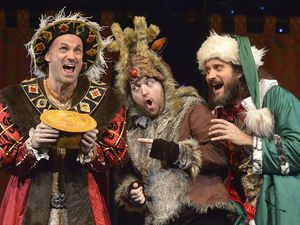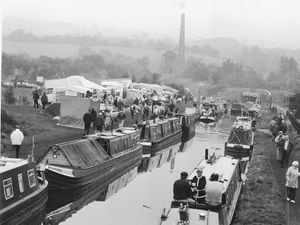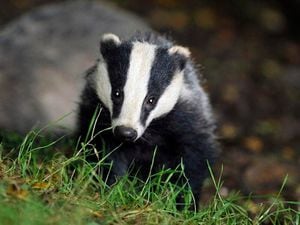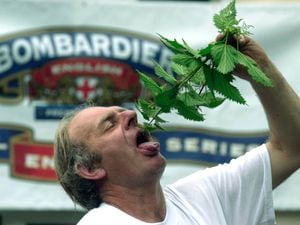Sixty years ago today: Questions raised in aftermath of the assassination of President JF Kennedy
A defiant Lee Harvey Oswald, waving his handcuffs to the camera.
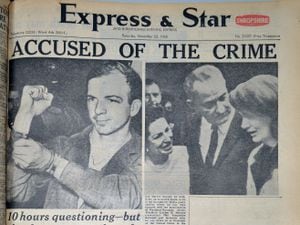
That was the image that greeted readers of the Express & Star 60 years ago.

Shortly after noon on November 22, 1963, President John F. Kennedy was assassinated as he rode in a motorcade through Dealey Plaza in downtown Dallas, Texas.

It was a moment that shook the world and immediately raised the question as to who was the murderer and what was the motive.
The Express & Star reported how Harvey Oswald, a suspected Communist sympathiser, had been arrested almost immediately after the shooting, but was still protesting his innocence after 10 hours of questioning.
The Queen had ordered a week of mourning, and cancelled a number of royal engagements. It was announced that Prime Minister Alec Douglas-Home, who had only assumed office the previous month, would be travelling to Washington with Prince Philip for a memorial service.
Downing Street also announced that a national service of commemoration would be held in Britain on a date to be announced.
Meanwhile the investigation into the assassination was moving fast.
Captain Will Fritz, of the Dallas homicide squad, announced that Oswald had not confessed and made no statement.
The district attorney Henry Wade said the case would probably be presented to a jury during the next few days, once additional information had been gathered.

Oswald had originally been arrested on suspicion of murdering a policeman who had apprehended him in the aftermath of the Kennedy shooting.
But he quickly emerged as the prime suspect for the President’s assassination.
The Express & Star reported that former marine Oswald, who was 24, had defected to the Soviet Union in 1959, and worked in a Minsk factory before asking to return to the US.
He was granted an exit visa by the Soviet authorities, and returned to his homeland in 1962, with his wife and child.
The newspaper said: “Several witnesses were brought into police headquarters to confront the small, thin-faced Oswald, a slightly built man with curly fair hair.
It adds: "Oswald's wife, Marina, a diminutive blonde, was brought to police headquarters to speak to her husband shortly after he had been taken in for questioning. She arrived with her two daughters – a baby in arms aged six months and a girl of five.
"Up to a late hour Oswald was continuing to maintain he had nothing to do with the assassination of the president and that he was innocent of murdering the policeman."
Even in the aftermath of the shooting theories were starting to emerge on the assassination and questions were being raised over Oswald as a suspect and whether he acted alone or was even possibly innocent.
The Star wrote: "One theory on which police were earlier said to be working was that the assassin or assassins might be professional killers hired to do the job.
"The theory was based on the feeling that the assassination was too cold-blooded and precise for a paranoic with a grudge against the president.
"When arrested, in a cinema, screaming and shouting and reported to be brandishing a pistol, Oswald was quoted by police as saying: 'Well, it is over now'.
"Oswald, handcuffed and held by two policemen, was brought before reporters shortly after midnight in the police line-up room. His face was white as chalk, his shoulders hunched. Oswald said in a barely-audible whisper that he had not killed the president or the policeman."
The paper also quoted Dallas District Attorney Henry Wade, who told reporters: "I don't think he is a nut. I think he is sane. I don't mean he is any PhD, but he answered questions very easily and he is sharp."
And, despite rising speculation, he added there was no evidence that anyone was "behind" Oswald or associated with him. "We have no other suspects at the moment," he added.
Paraffin wax impressions were made of Oswald's skin, to determine whether there were any powder marks on his face or hands. A rifle found in the warehouse where the fatal shot was said to have been fired was flown by jet to Washington for analysis by the FBI.
But Oswald would never stand trial.
On November 24, just after 11am, Oswald was escorted through the basement of Dallas police station as officers prepared to transfer him to the county jail.

As newsmen gathered to catch a glimpse of the man suspected of the President’s murder, nightclub owner Jack Ruby stepped out of the crowd and shot Oswald from point-blank range – all while being transmitted on live television.
Despite persistent conspiracy theories of a plot involving Soviet security forces, Cuban leader Fidel Castro, the FBI, the CIA or even Kennedy’s own vice-president, Lyndon B Johnson, a 10-month investigation, headed by Chief Justice Earl Warren, concluded that Oswald had acted alone in the assassination of the President, and that Ruby had acted alone in taking Oswald’s life.


